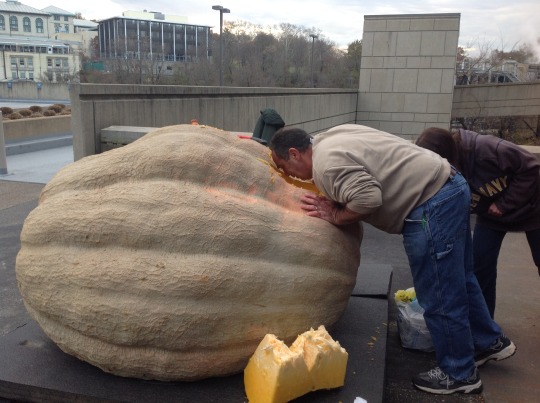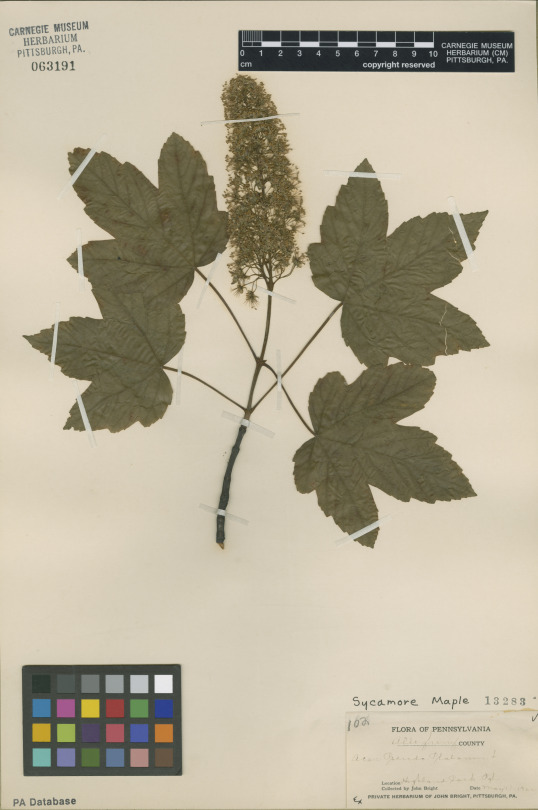By Bonnie Isaac

There was a giant pumpkin on display in the courtyard at the museum as part of We Are Nature: Living in the Anthropocene.

The farmer who grew the 2,090.5 pound pumpkin (above) recently came to the
museum on November 25th to harvest the seeds from the pumpkin.

He will use the seeds from this pumpkin to try to grow an
even bigger pumpkin next year.

That was one big pumpkin!
Bonnie Isaac is the collection manager in the Section of Botany at Carnegie Museum of Natural History. Museum employees are encouraged to blog about their unique experiences and knowledge gained from working at the museum.







